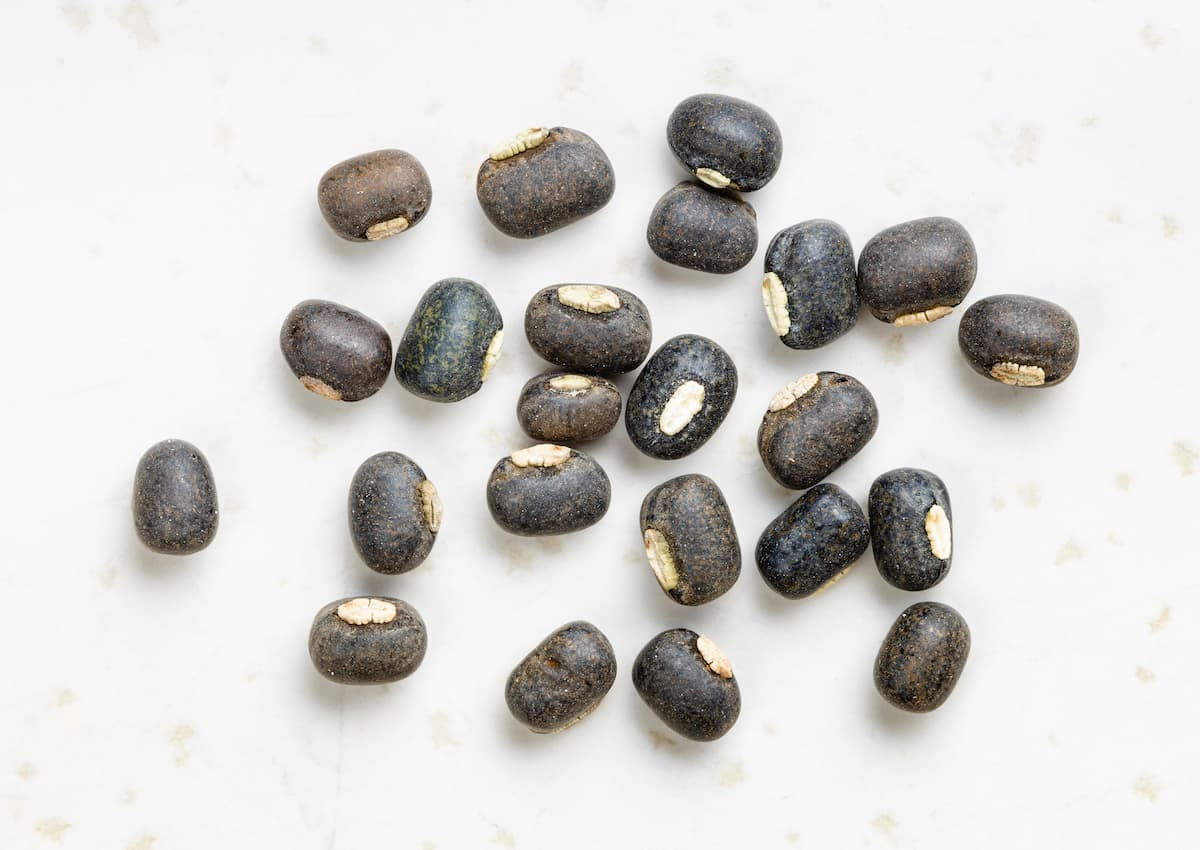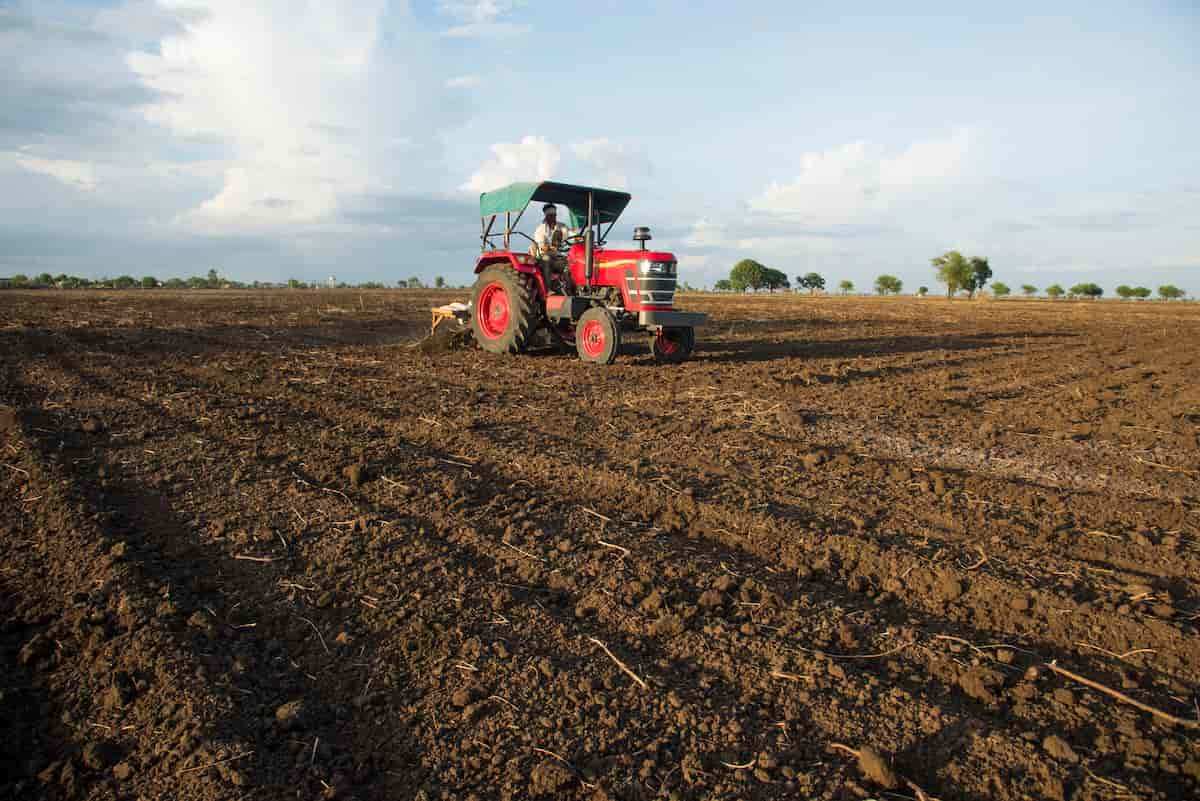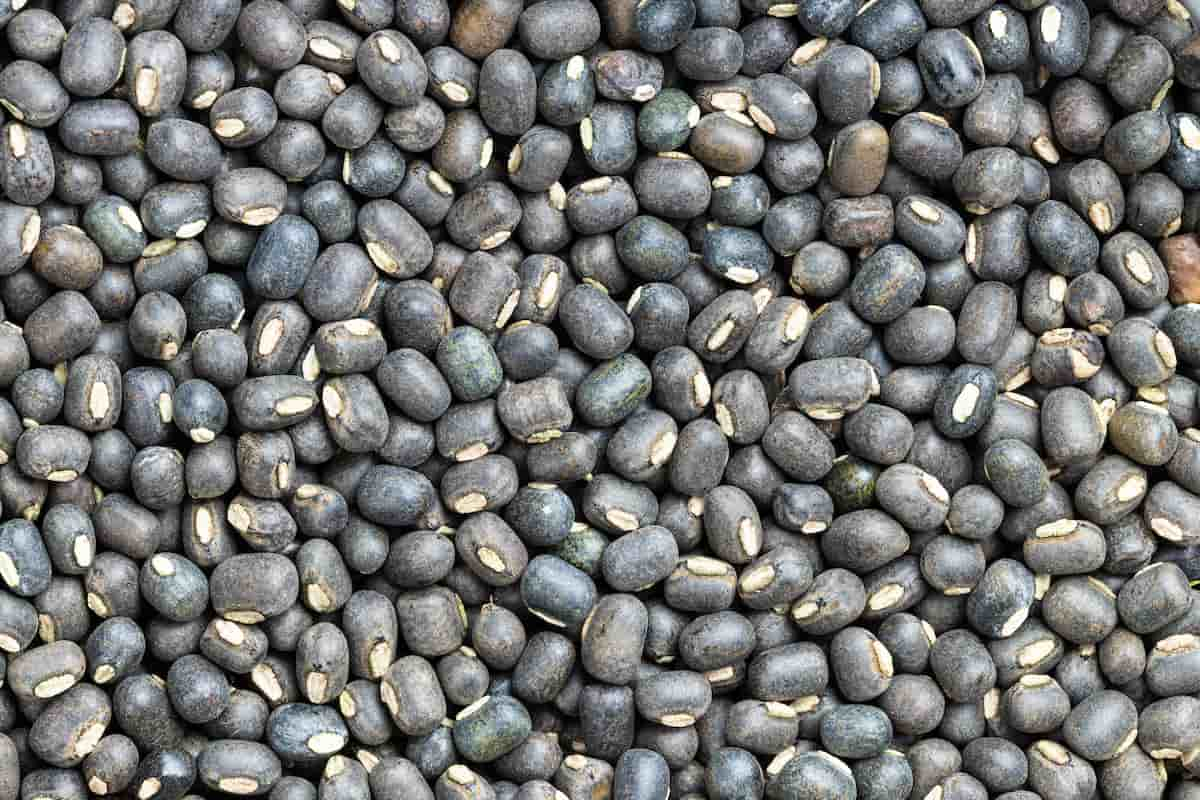Black gram, also known as urd dal, urd bean, black bean, or black lentils, is popular in India due to its high nutritional value and culinary uses. The plant is upright and erect and has dense hair and flat nodules. Black gram is produced nationwide, making it one of the most significant pulse crops worldwide. The crop is well-known for its ability to thrive in harsh climates and to improve soil fertility by fixing atmospheric nitrogen.

According to studies, black gram can replace 59 thousand tonnes of urea with 22.10 kg of nitrogen per hectare. Black gram provides protein, minerals, and vitamins. Its protein level is almost three times cereals. Black gram feeds milch animals and humans. With its high phosphoric acid content and earthy flavor, Black gram is an important component of Indian cuisine.
Black Gram Production Guide
Best Package and Practices of High Black Gram Production
The best methods for producing black gram with a high yield include using high-quality seeds, appropriate irrigation, balanced fertilization, and prompt pest and disease control. Maintaining records and analyzing data can help optimize inputs and increase returns.
Land/ Field Preparation and Soil Requirements for Black Gram
The best soil for growing black gram is a well-drained clay with a pH range of 6.5 to 7.8. For salty or alkaline soils, it is not suitable. For the Rainy crop, the land needs to be plowed two to three times and properly leveled. To avoid water stagnation, which could harm the crop, adequate drainage should be provided. The ground should be carefully prepared by removing all weeds and stubbles in the summer.
In case you missed it: Red Gram Production Guide: A Step-By-Step Cultivation Practices for Beginners

Temperature, Climatic, and Rainfall Requirements for Black Gram
Black gram can be produced year-round in most regions, with the rainy season as the primary cropping time. It needs a warm, humid environment with average daily temperatures between 25 and 35 °C. Frost-sensitive, high temps (>40°C) can negatively impact the crop’s yield. Black gram can tolerate low rainfall of about 30 to 40 cm but prefers rainfall between 60 and 90 cm. Waterlogging can result from excessive rain, which is bad for the produce.
Seed Rate, Seed Treatment, and Spacing for Black Gram
Black gram seeds should be sown at a 12–15 kg/ha seed rate during the Rainy season and 20–25 kg/ha during the spring. In the Rainy season, the spacing should be 30 to 35 centimeters between rows and 10 to 15 cm between plants; in the winter, it should be 20 to 25 cm and 5 to 10 cm between plants.
Treating the seeds to safeguard the crop from diseases and pests is recommended. In conjunction with carbendazim and thiram, Rhizobium and PSB are recommended for seed treatment. Carbofuran can also defend against Reniform nematode and Root knots in heavy cropping. Mid-June is the best period to sow for the rainy season.
Sowing Method for Black Gram
Broadcasting, line sowing, and seed drilling are all options for propagating methods of black gram seed. In regions with abundant rainfall and significant soil moisture, broadcasting is practiced. In dry regions with little rainfall, line sowing is favored. When lines are planted, seeds are sown in ruts dug by a plow or a seed drill. The dirt is then spread over the furrows. The seeds are dispersed evenly across the area and lightly dusted with soil when broadcasting.
Manure & Fertilizer Applications in Black Gram
Black gram requires a balanced dose of fertilizers for optimum growth and yield. A fertilizer dose of 20:40:20 NPK kg/ha along with 20 kg S/ha is recommended for high-yielding varieties. Zinc is the most deficient micronutrient in black gram, and its application at 25 kg/ha as basal gives promising results.
Boron and molybdenum give better results in acid soil. A foliar spray of 2% DAP and 2% KCl at the pre-flowering stage enhances yield. Additionally, compost or FYM should be applied at a 5-10 t/ha rate during land preparation to improve the soil.
Crop Rotation and Intercropping in Black Gram
In the Rainy and summer growing seasons, black gram is grown as a single crop, mixed crop, cash crop, or under rainfed or semi-irrigated conditions. Intercropping and crop rotation methods are used with pigeonpea, maize, sorghum, and soybeans, which can improve soil health, increase yield and quality, and offer farmers additional income.
Weed Control and Herbicide Application in Black Gram
Applying Pendimethalin at 3.3 liters/ha under irrigation and 2.5 liters/ha under rainfed conditions 20 days before emergence is recommended, then performing one hand weeding. As an alternative, 15 to 20 days after planting, herbicides like quizalofop ethyl and imazethapyr can be used.
If herbicides are not used, two manual weedings should be done on days 15 and 30 after sowing. PE isoproturon can be applied to irrigated black gram at a 0.5 kg/ha rate, followed by one-hand weeding 30 days after planting. Effective weed management is crucial to avoid competition for nutrients, water, and light and promote better yields.
Water Management/ Irrigation in Black Gram
For Rabi and Pre-rabi seasons, pulse crops like black gram are commonly grown using residual soil moisture. However, irrigation is crucial during critical growth stages such as flowering and pod development. Proper water management and timely irrigation can enhance black gram yield and quality.
Disease Control in Black Gram
Black gram is prone to diseases like the yellow mosaic virus and diseases like leaf crinkle, mosaic, and sterility mosaic. Effective control methods include resistance breeding, removing and burning infected plants, and using insecticides like Malathion (0.05%).
During the rabi season, powdery mildew in the southern and south-eastern areas and yellow mosaic in the northern plains are the two major diseases. Phorate application at 1 kg/ha in the soil before or at sowing is advised to manage the yellow mosaic virus. Effective disease and pest control can safeguard black gram yield and quality, increasing producers’ profitability.
In case you missed it: Soybean Production Guide: A Step-By-Step Cultivation Practices

Pest Control in Black Gram
Black gram is susceptible to many insect pests, including whiteflies, aphids, pod borers, thrips, stem flies, and jassids. Pre-sowing application of Furadon 3G at 30 kg/ha for stemfly control is one of the most efficient control methods. Spraying with Monocrotophos (0.04%) or Malathion (0.06%) is useful against thrips, jassids, and pod borers.
Triazophos or Carbaryl can also be sprayed to suppress pod borer. Spraying Methyl dementon 25 EC at 1000 ml/ha will suppress aphids. Imidacloprid at 1 ml/3.5 liters of water or Flonicamid at 200gm/Ha can suppress whiteflies.
Harvesting and Threshing of Black Gram
For black gram, harvesting should be done when 70-80% of the pods mature and most turn black. Delayed harvesting may result in shattering. The harvested crop should be dried on a threshing floor for a few days before threshing. Manual threshing or trampling under the feet of bullocks are both suitable methods. The clean seeds should be sun-dried for 3-4 days to bring their moisture content to 8-10% for safe storage in appropriate bins.
Black Gram Yield per Acre
The yield of black gram is approximately 300–500 kg/acre. A well-managed crop of urd bean can produce 12–15 q/ha (1200–1500 kg/ha).
Conclusion
Black gram cultivation includes soil preparation, seed selection, nutrient management, pest and disease control, harvesting, and storage. Farmers can increase crops and profits by following best practices.
- Feed Your Flock for Less: Top 10 Tips to Save on Chicken Feed
- Ultimate Guide to Ossabaw Island Hog: Breeding, Raising, Diet, and Care
- Hatching Answers: The Top 10 Reasons Your Chickens Aren’t Laying Eggs
- Eggs and Economics: Breaking Down the Cost of Raising Backyard Chickens
- Defend Your Greens: Proven Methods to Keep Iguanas Out of Your Garden
- Ultimate Guide to Cinnamon Queen Chicken: A Comprehensive Guide for Beginners
- Ultimate Guide to California Tan Chicken: Breeding, Raising, Diet, Egg-Production and Care
- Ultimate Guide to Marsh Daisy Chicken: Breeding, Raising, Diet, and Care
- 10 Types of Chicken Farming Businesses You Can Start for Profits